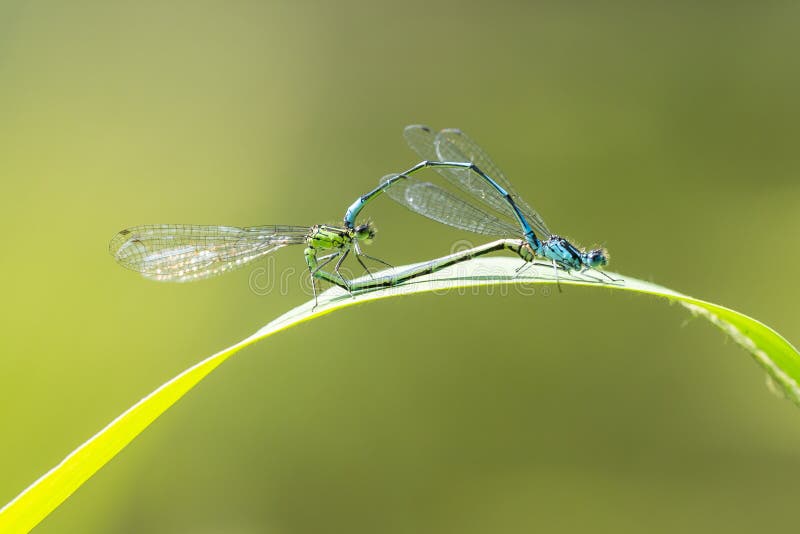

Nymphs can change colour during their development to camouflage with surrounding vegetation or even to discourage some predators.When Common Bluetail Damselflies are at rest, they hold their wings closely folded up vertically over their thorax, whereas dragonflies generally hold theirs spread out.
FEMALE COMMON BLUETAIL DAMSELFLY SKIN
The skin splits down the back, they emerge and inflate their wings and abdomen to gain their adult form. At the last moult, they climb out of the water to undergo metamorphosis (changes that occur from the nymph to adult stage).

The eggs are laid in or near fresh water, and hatch into nymphs which moult repeatedly. The females have a variety of forms including green, brown, black and a form with very similar colourings to the male.ĭamselflies belong to the order Odonata (which also includes dragonflies). Most males have blue eyes, a blue and black thorax, black abdomen with a blue ringed tail. The Common Bluetail Damselfly, found throughout the entire continent of Australia, is generally found near slow-running or still water. Common Bluetail Damselfly Currently selected.If you visit Rathlin in the summer, why not see how many of the island’s Odonata species you can find? Not all species fly at the same time of year, but between late May and late September at least some of them should be on the wing, and if you’re here in late June / early July you might be able to locate most of them. Despite this species being mentioned on RSPB information boards and magazines as something to look out for on Rathlin, there do not actually appear to be any documented records. We would love to find one of these stunners here!įinally, we feel the need to mention Brown Hawker. There is at least one intriguing (but unconfirmed) report of this big and fairly unmistakable insect on Rathlin, and several probable sightings elsewhere in Ireland. Also present just across the water in Scotland is Golden-ringed Dragonfly. Keeled Skimmer may also be possible, especially as it is found on the nearby Scottish islands. Their similarity to Common Blue and Azure Damselflies makes them very easily overlooked. Paying close attention to blue damselflies on the island may also one day produce a Variable Damselfly or (less likely) an Irish Damselfly. Migrant Hawker, as already mentioned, must be a possibility in autumn as this very mobile species continues to advance northwards and has already been recorded in Northern Ireland. So far, that is the complete Odonata list for Rathlin, but there a few other species that might occur here some day. The Black Darter also always has a backwards-pointing black triangle on top of the thorax. Side-by-side, the female Black Darter (top) is slightly smaller and more brightly coloured than the female Common Darter (bottom).

A side view nicely shows the black panel containing three yellow blobs on the side of the thorax. Mature female Black Darters are very striking with bold black and yellow markings. There are no other red damselflies in Ireland, so identification is nice and easy. A few appeared around the West Light on 13th May, and they were common in several places until late June. The first species we saw on the wing this year was Large Red Damselfly. More information for each species can be found by following the links to the useful Dragonfly Ireland pages. Here we’ll look at each species in turn, starting with the ones that appear earliest in the year. We managed to find nine of them during the year, eight of which were really very common and easily encountered. There appear to be ten species of Odonata recorded from Rathlin – five damsels and five dragons. We’re far from dragonfly experts, but after a year of Odonata ogling we’re now fairly familiar with all the local species and have amassed plenty of photos of them, some of which we’ll share in this blog post. It was a great opportunity to get to know these impressive insects a bit better. Throughout the summer, we enjoyed seeing these spectacular creatures hawking, chasing and darting around all over the island. This year seemed to be a good one for Dragonflies and Damselflies (collectively Odonata) on Rathlin.


 0 kommentar(er)
0 kommentar(er)
